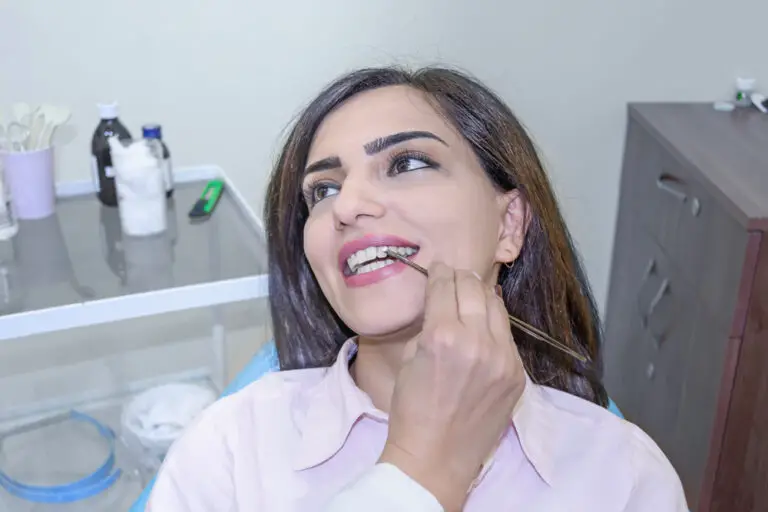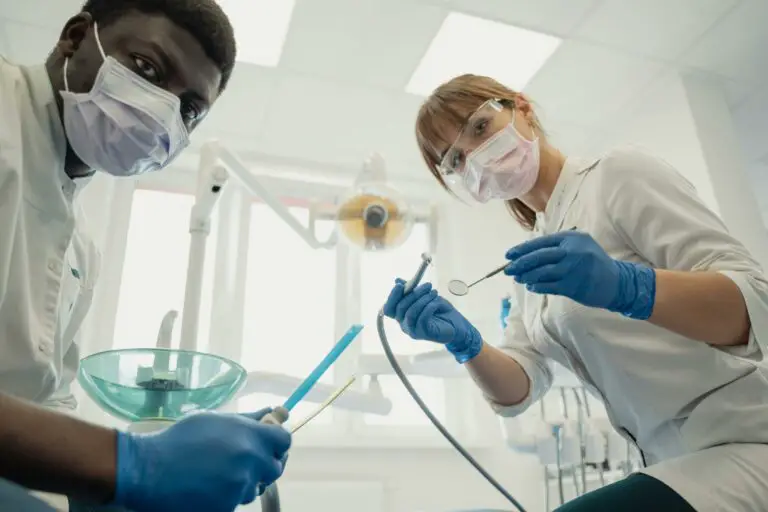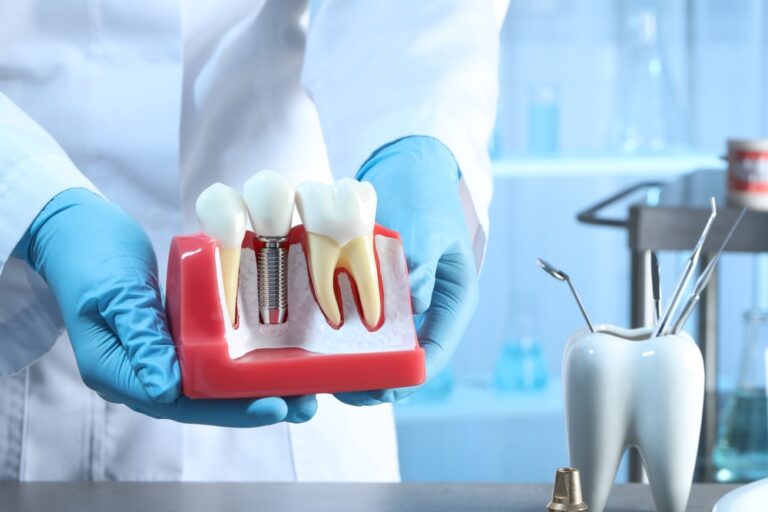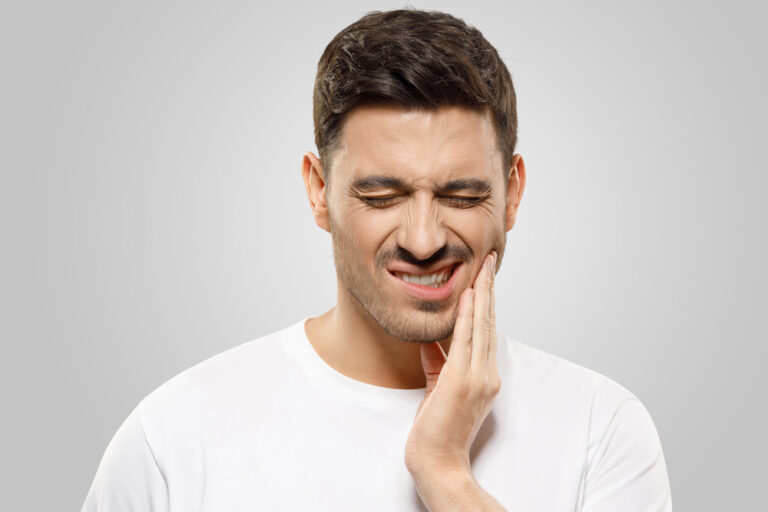Noticing a foul, rotten, or pungent odor originating from the back of your mouth is a common concern. This unpleasant smell is often localized to a particular tooth or gum line rather than the entire mouth. While embarrassing, a foul odor from a back tooth is usually a sign of a dental health problem that needs attention.
In this comprehensive guide, we will cover the potential causes, diagnosis methods, treatments, and home remedies for bad breath coming from the back teeth. Read on to gain a deeper understanding of why your back tooth smells bad and what can be done about it.
What Causes a Back Tooth to Smell Bad?
There are several possible sources for foul odors isolated to the back of the mouth or a specific back tooth. Let’s explore them in more detail:
1. Tooth Decay
Tooth decay, also known as dental caries or cavities, is arguably the most common cause of bad breath originating from a back tooth. Tooth decay occurs when plaque, a sticky film containing bacteria, builds up on the tooth surface. Without proper daily plaque removal through brushing and flossing, it hardens into tartar that adheres firmly to the teeth. The plaque bacteria metabolize sugars and starches in the diet and produce acids as a byproduct.
These acids cause demineralization of the tooth enamel leading to cavities. As the enamel is dissolved away, bacteria gain access to the softer dentin layer underneath. The bacteria continue eating through the dentin, approaching the innermost layer called the pulp. The pulp contains nerves, connective tissue, and blood vessels to nourish the tooth. Once decay reaches the pulp, the bacteria release foul gases and byproducts that seep out through tiny pores and channels in the tooth structure.
Progressing decay leads to decomposition and death of the living pulp tissue inside the tooth. The infected pulp accumulates pus, dead cells, and more bacteria, fueling the rotten odor. Without treatment, the infection can eventually penetrate through the root tip into the surrounding bone, releasing additional pus and bacteria that worsen any odor.
2. Periodontal (Gum) Disease
Periodontal or gum disease is a serious bacterial infection causing inflammation and destruction of the gums and jawbone surrounding the teeth. It is induced by a buildup of plaque bacteria along and below the gum line. As plaque accumulates in this area more easily avoided by brushing, it causes chronic infection and inflammation of the gums. The gums gradually detach from the teeth forming deep pockets that become filled with bacteria, food debris, and pus.
The bacteria in the pockets release toxins that break down gum and bone tissue. This leads to increased pocket depth, receding gums, bone loss around teeth, and eventually tooth loosening or tooth loss if untreated. The infected debris accumulating in these periodontal pockets is often the culprit for bad odors originating from the back of the mouth. The pockets are deeper around molars since they have more root surface area, and food also packs tightly between back teeth.
3. Pericoronitis
Pericoronitis refers to inflammation of the soft tissues surrounding the crown portion of a tooth. It most often occurs with partially erupted wisdom teeth, which are the third molars in the very back of the mouth. When wisdom teeth try to break through the gums, food debris and bacteria can get trapped under the flap of gum tissue overlaying the crown. This provides an ideal anaerobic environment for bacteria to thrive, potentially causing a localized gum infection.
Symptoms include pain, swelling, redness, and even difficulty opening the mouth. As bacteria accumulate in the protected environment around the wisdom tooth, it can release gases and cause a foul, rotten smell coming from the back of the mouth. Pericoronitis may resolve on its own but often needs treatment to control the infection.
4. Impacted Food
Bits of retained food trap easily between back teeth and dental work like fillings, crowns, bridges, and dental implants due to their intricate anatomy and tight contact points. Impacted food begins to decay from bacterial metabolism, eventually releasing odors. The back teeth’s bumpy chewing surfaces make it particularly easy for food particles to become impacted and lead to localized bad breath.
Foods notorious for getting stuck include meat, popcorn kernels, seeds, nuts, veggies like corn or spinach, and even bread or toast. The decaying food debris causes foul breath until you are able to properly remove it by brushing, flossing, or using irrigation methods.
5. Dry Mouth (Xerostomia)
Dry mouth, also known medically as xerostomia, provides an ideal environment for bacterial overgrowth. Saliva contains antibodies and antimicrobial enzymes that help control bacteria levels. When saliva flow decreases, bacterial populations explode, resulting in increased halitosis or bad breath. Dry mouth is exacerbated while sleeping since saliva production is lower.
Many medications like antihistamines, decongestants, pain pills, and antidepressants have dry mouth as a side effect. Other factors include dehydration, smoking, stress, poor nutrition, radiation therapy to the head and neck, and certain medical conditions like diabetes and Parkinson’s disease. The back of the mouth has fewer salivary glands and less saliva coating, increasing risk of odor from dry mouth.
How to Determine Which Tooth is Causing the Odor?
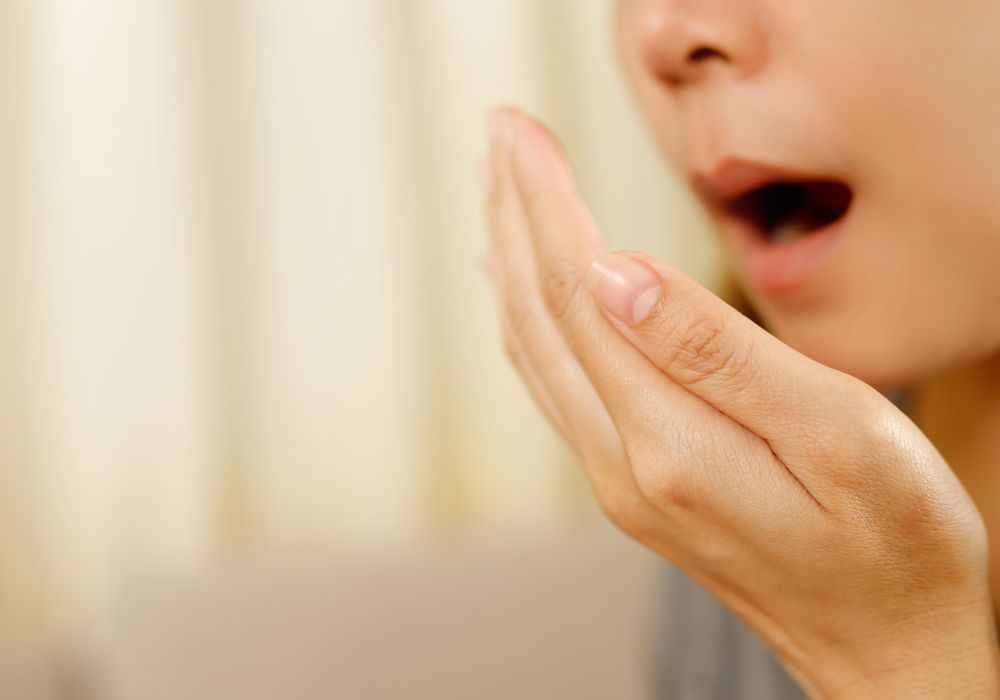
Once you suspect a specific back tooth as the source of a bad smell, there are methods you can try at home to isolate the odor before seeing a dentist:
Localize the Odor
Systematically smell the front, sides, and back of your mouth with your mouth wide open. See if you can pinpoint one problematic area producing most of the odor. Then visually examine that region and smell individual teeth to try and triangulate the smell.
Use a Dental Mirror
With a small handheld dental mirror from a drugstore, you can visually inspect between teeth, under gumlines, and surfaces that are hard to see directly. Look for any signs of decay, damaged fillings, excessive tartar or plaque, gum recession, or retained food that could cause odor.
Tap Tooth Surfaces
Gently tap a suspected tooth with the rounded end of a dental tool or a pencil eraser. See if tapping produces any pain, discomfort or sensation. This may indicate inflammation in the tooth’s interior layers. However, be cautious not to damage tooth surfaces.
Check for Plaque
Use a disclosing tablet or solution that colors areas of plaque buildup pink or red. After diligently brushing and flossing, swish the disclosing agent around your mouth. If a back tooth retains stubborn plaque, it likely is harboring odor-causing bacteria.
Test with Cold Stimulus
See your dentist and ask them to isolate back teeth individually and apply a cold stimulus like a chilled air stream or ice stick. Lingering pain and sensitivity when the cold source is removed may signal inner tooth infection and inflammation.
Percuss Teeth
A dentist can also gently tap each back tooth with a dental instrument while you bite down slightly to isolate them. If you feel any painful sensation or discomfort upon tapping, it indicates a problem with that particular tooth, such as an abscess.
Dental X-rays
X-rays allow visualization between and below teeth that a visual exam alone can’t provide. Cavities and bone loss from infection and inflammation can be detected. Ask your dentist to x-ray your back teeth and check for issues.
Why Does Tooth Decay Cause Odor?
Earlier we touched on how tooth decay leads to bad odors originating from a back tooth. Here is a more in-depth look at the process:
Enamel Demineralization
Dental plaque bacteria feast on leftover sugars and starches from your diet and release acids as waste products. These acids, especially lactic acid, dissolve away minerals like calcium and phosphate from the tooth’s enamel layer in a process called demineralization. This decalcification etches holes in the enamel, eventually forming a cavity.
Bacteria Penetrate Enamel
As demineralization destroys more enamel, it provides a pathway for bacteria to make their way into the tooth’s porous structure. The number of bacteria increase exponentially as they reach the bounty of nutrients in the underlying dentin.
Pulpal Infection
Dentin demineralization progresses more quickly than enamel. The bacteria easily make their way through to reach the pulp chamber. Once bacteria invade the living dental pulp tissue, they have accessed the tooth’s nerves, blood supply, and connective tissue. Infection severe pain, swelling, bone loss, and pus formation.
Tissue Necrosis
Bacteria rapidly multiply in the pulp chamber’s moist, warm environment. Their metabolites and cell wall components induce necrosis (death) of the pulpal cells. The infected, necrotic pulp provides ample nutrients for continued bacterial overgrowth.
Putrefaction
As pulp tissue dies, the bacteria shift to utilizing the dead cells and pus as a food source. Bacterial putrefaction of this diseased pulp produces extremely foul sulfur gases and cheesy/rotten odor that can permeate through the tooth.
Abscess Formation
Without treatment, a pocket of pus called a periapical abscess forms at the tooth root tip as bacteria leak through the bottom of the root canal. This releases more toxins and bacteria into the surrounding bone and tissue. This worsens any odor.
Why Brushing and Flossing Alone Can’t Stop Bad Tooth Odor?
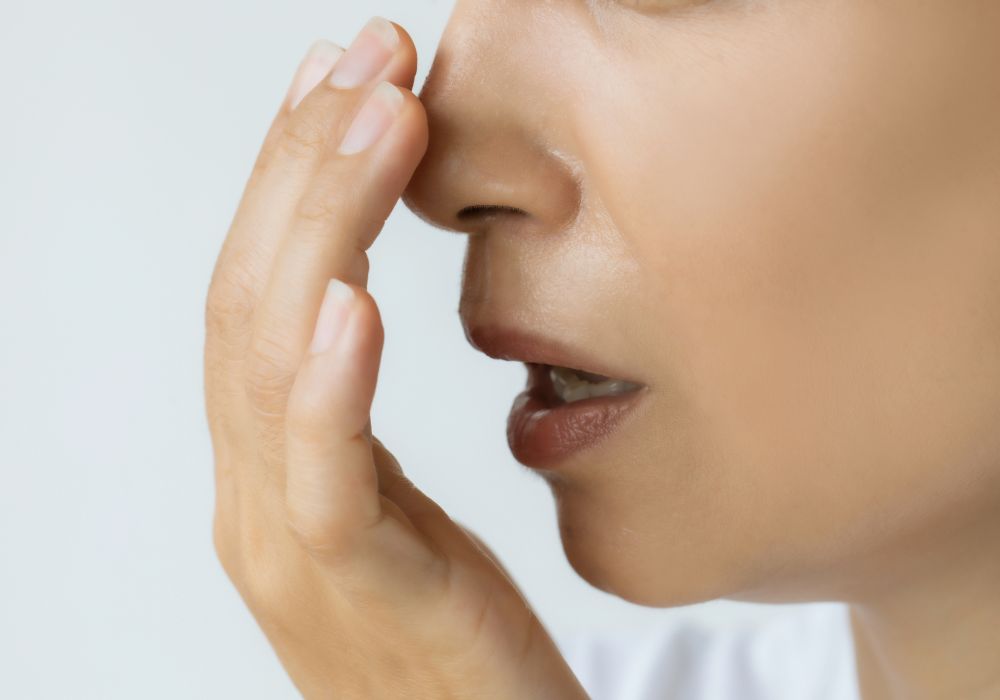
Proper daily oral hygiene through brushing, flossing, and antimicrobial mouthwashes is critical to prevent tooth decay and gum disease which lead to bad breath. But once an infection is present inside the tooth, simple home care is not enough to stop the odor. Here’s why:
Can’t Reach Inner Tooth Layers
A toothbrush cleans only the most superficial surfaces of teeth. It cannot penetrate beneath the enamel into areas of established decay. Likewise, flossing removes bacteria from between teeth but cannot access cavitated decay inside a tooth’s structure.
Bacteria Byproducts Diffuse Through Enamel
The gases and bacterial metabolites that cause a foul odor can diffuse through microscopic channels and pores within the enamel to escape even from inner decay. No amount of external brushing and flossing can stop these gaseous byproducts from leaking out.
Spread of Infection
Once the pulp becomes infected due to deep decay, inflammation will spread through channels at the root apex called lateral canals even if you brush perfectly. This leads to external abscess formation and worsening odor.
Pre-existing Cracked Teeth
Even aggressive brushing and flossing cannot reverse pre-existing damage like cracks, chips or leaky margins in fillings or crowns which allow bacteria to rapidly infiltrate the pulp.
Persistent Dry Mouth
Chronic dry mouth provides an ideal environment for increased bacterial growth and plaque accumulation. Meticulous home care can only partially compensate when someone has severely reduced saliva flow.
The key point is routine brushing and flossing must be established to prevent decay and halitosis in the first place. But once an active infection develops inside the tooth structure, more intensive professional treatment is required. Seeking dental care quickly is key to resolving any foul odors arising from the back of the mouth.
Professional Dental Treatments to Stop Bad Tooth Odor
The most effective way to eliminate a rotten odor from the back of your mouth is to seek professional help. Here are common dental treatments that can successfully address foul tooth odor:
Dental Fillings
If decay is localized and has not reached the pulp chamber, a simple filling may be placed to remove the decayed section. Composite resin or amalgam fillings block the odor source.
Root Canal Therapy
For more extensive decay involving the pulp, root canal treatment is needed. This involves accessing the pulp chamber, mechanically debriding out diseased pulp tissue, disinfecting the interior of the tooth with antimicrobial rinses, and tightly sealing the inner tooth with a rubber filling material. The tooth is later capped with a porcelain crown which provides a definitive barrier to odor.
Dental Implants
If the decay is so advanced that a tooth is unrestorable, extraction removes the odor source entirely. However, this leaves a missing tooth. Dental implants can be placed to replace the missing tooth and prevent bite shifting or difficulty eating. Titanium implants fuse to the jawbone and support a lifelike porcelain crown.
Periodontal Surgery
Severely progressed gum disease may require flap surgery to clean tartar below the gumline and smooth eroded bone. This reduces periodontal pocket depth and shrinking swollen gums so they can reattach to the teeth for an odor-free environment.
Wisdom Tooth Removal
For refractory pericoronitis, surgical wisdom tooth extraction can be performed to get rid of the problematic tissue flap harboring bacteria. This prevents recurrent infections and swelling that breeds odors.
The key is to have your dentist diagnose the specific offender causing bad odor coming from the back of your mouth. Proper treatment of decay, gum disease, or other oral infections can permanently eliminate the bad tooth smell.
Home Remedies to Try for Back Tooth Odor
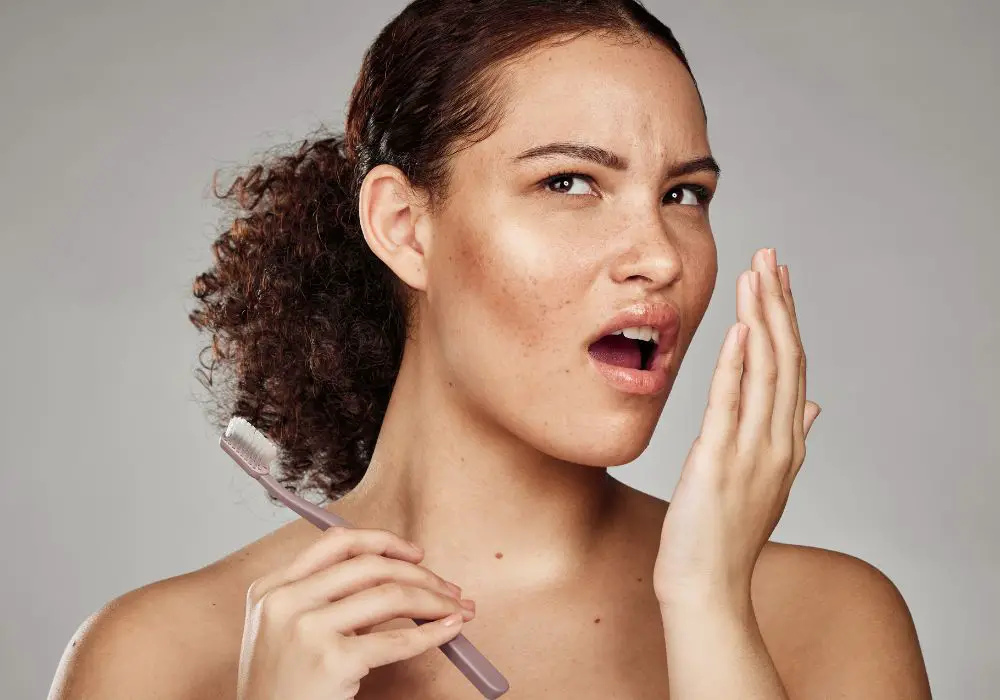
While awaiting professional dental treatment, you can take some measures at home to temporarily reduce or mask foul odors stemming from a back tooth:
Increase Water Intake
Drink plenty of water to aid the mechanical rinsing or flushing away of loose bacteria and food debris. This also stimulates more saliva flow to buffer oral bacteria. Shoot for at least 64 ounces of water daily.
Antiseptic Mouth Rinse
Gargle with an antibacterial mouthwash containing essential oils, chlorhexidine, cetylpyridinium chloride or hydrogen peroxide to reduce overall bacteria levels. This provides short term breath freshening.
Baking Soda Rinse
Mix a teaspoon of baking soda into a cup of warm water and swish it around the mouth. This solution neutralizes acid and transiently boots oral pH to control bacteria metabolism. Rinse after meals when acid levels in the mouth peak.
Sugar-free Gum
Chewing gum stimulates the flow of saliva up to 10 times the normal rate, helping dislodge food and buffer acidity. Look for options with xylitol or other non-fermentable natural sweeteners. Avoid sorbitol which bacteria can metabolize.
Crunchy Fruits and Veggies
Chew on crunchy fibrous fruits and vegetables at the end of a meal. Their crisp texture helps mechanically scrape away bacteria and food debris while stimulating saliva. Some good options include celery, carrots, jicama, apples, and sugar snap peas.
Tea Tree Oil
Due to its potent antimicrobial effects, tea tree oil may help control bacteria when applied directly to the tooth odor source. Dip a cotton swab and gently rub a very small amount on the affected tooth and gumline. Rinse thoroughly.
Citrus Fruits
Bite into lemon, lime, or orange wedges to stimulate saliva and get direct plaque-fighting benefits from the juice’s acidity and vitamin C content. Just beware of too much acid on enamel. Sucking on peeled orange rinds increases saliva without acid.
Probiotic Rinses
Using an oral probiotic rinse introduces beneficial bacteria to compete with odor-causing microbes. Look for rinses with Streptococcus oralis or S. salivarius in the ingredients for fresher breath.
Zinc Toothpaste
Brush daily with a toothpaste containing zinc gluconate, zinc citrate or zinc oxide. Zinc has been shown to reduce sulfur gases produced by oral bacteria that lead to foul odors.
While home care can help lessen back tooth odors, keep in mind the smell will persist without definitive professional treatment to fix the underlying problem, whether it is decay, gum disease, or something else. Don’t delay seeking dental attention.
When to See a Dentist for Bad Tooth Odor?
Don’t ignore or try to mask bad odor from the back of your mouth with gum, mints, or sprays. Make an appointment to see your dentist promptly if you notice:
- Unpleasant breath that continues despite good oral hygiene
- Odor seems to originate from a particular tooth site rather than the whole mouth
- You wake up with very bad morning breath daily
- A bad taste lingers in your mouth, especially one described as bitter, metallic, or rotten
- You have chronic, unexplained halitosis
Signs that indicate you need emergency dental care for severe tooth infection include:
- Sudden, severe throbbing toothache
- Tooth sensitivity to hot or cold
- Gum swelling with possible abscess
- Bleeding, red inflamed gums
- Loose teeth with pain upon chewing
- Fever, swollen lymph nodes, or facial swelling
Don’t wait with these acute infection signs as you risk the spread of infection. Getting prompt professional treatment provides immediate and lasting relief from embarrassing back tooth odor.
FAQs About Bad Breath from Back Teeth
Why can’t my partner smell my bad breath that I clearly notice?
You become desensitized to your own familiar scents. A partner cannot detect more subtle cases of bad breath that you are acutely tuned into. However, ask them to confirm any strong, persistent odors. Don’t ignore signs of dental disease.
Can post-nasal drip or sinusitis cause bad breath?
Yes, excess mucus from the sinuses dripping down the throat provides an environment for bacteria to multiply, causing malodorous breath. This is worse upon waking since mucus accumulates overnight as you breath through your mouth. See an ENT for treatment of sinus conditions.
Why do I have bad breath even when I brush and floss properly?
Even with the most diligent oral hygiene, issues like retained food, select areas of gum disease, chronic dry mouth or small areas of tooth decay can contribute to bad breath. Other factors like diet, smoking, medications, gastric reflux, and some systemic illnesses also play a role. See your dentist for a detailed exam and diagnosis. Don’t assume the issue is inadequate brushing and flossing.
What exactly causes morning breath upon waking?
The classic case of morning breath is due to reduced saliva flow as you sleep, allowing odor-causing bacteria to thrive overnight. Saliva flow decreases by up to 50% during sleep since you aren’t drinking liquids or chewing


